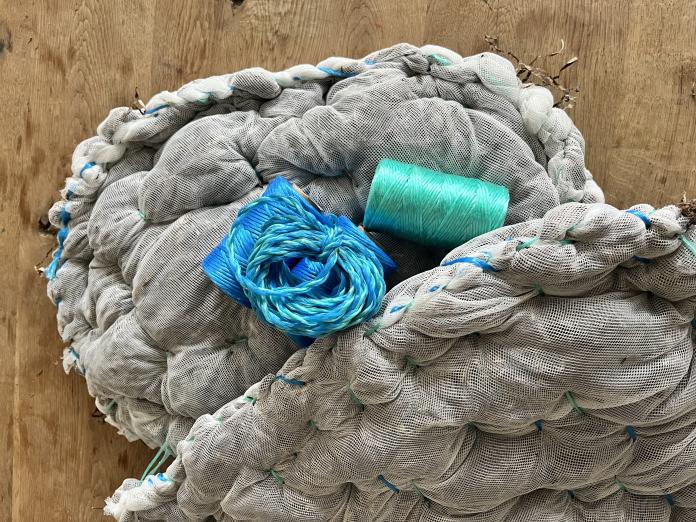Furniture with eelgrass: From sea to harbour
Meet furniture designer Nikoline Oda, who has created unique textile furniture with eelgrass that you can use and experience at this year's festival. We had a chat with Nikoline about the furniture design and her process of working with eelgrass.
Hi Nikoline, can you tell us a little about yourself and your work for Kulturhavn Festival?
Yes, I'm making eelgrass mattresses and mats for Kulturhavn Festival. I work as a furniture designer and I do a lot of furniture upholstery, where I only use eelgrass instead of plastic foam. I've been working with eelgrass for many years, so I'm also interested in other people getting to know it because it's a fantastic material.
What is special about working with eelgrass?
What I love about using eelgrass as an upholstery material is that it's so tactile and that it's a living material that responds to your body. There are several people who make solid mats of eelgrass where they compress or press it. I like to work with it as a loose cushioning material for cushions and pillows, so it stays very crisp and tactile. Then it changes over time and makes certain sounds and smells in a certain way.
Can you tell us a bit about the process from when the eelgrass is harvested until you have a finished piece of textile furniture?
I get my eelgrass from Møn Tang, which has been working with it since the 70s. When the eelgrass washes ashore, it's harvested very quickly and put up in some fields. Here it is cleaned by rainwater before it is dried and made into bales. When I receive a bale, I pull it all apart again so that over time it can compress and find its own place in the casing I have sewn. Then I wedge the eelgrass by making large seams up and down to hold the material in place because it has quite short fibres.
How does your work process work?
It's a very intuitive process. I've sewn some sleeves with fishnet-like fabric. Then I stuffed eelgrass in and tickled along the way to keep it in place. Each mattress, pillow or cushion is unique because all the stitching is different and there's no real system to it. Along the way, I have an idea of how the stitching should look, but the intuitive process makes them all unique.
What has been the inspiration for the textile furniture you can use and experience during the festival?
My inspiration is based on the harbour environment. I want to show as much eelgrass as possible so that it's not enclosed in a completely solid textile. That's why I use transparent textiles that are a bit like fishing nets. The colours are based on Kulturhavn's colour palette, where I have chosen to wedge with two different blue colours. The thread I use is also inspired by the harbour environment. Think about when you walk down by the harbour or look at fishing nets - it reminds you of those slightly synthetic colours and textures.
What types of furniture will there be at the festival?
There will be large picnic blankets, smaller mats and seating made from eelgrass bales that I sew some small cushions to lay on top of. So there are both real seating options and picnic blankets for a family. The idea is that you can move things around. It should be intuitive where you want to sit, so it's not stationary, but you can move from place to place.
Thank you so much, we can't wait to experience the furniture!
You can see, feel and smell Nikoline Oda's textile furniture with eelgrass at Kulturhavn Festival on 24-25 August!
